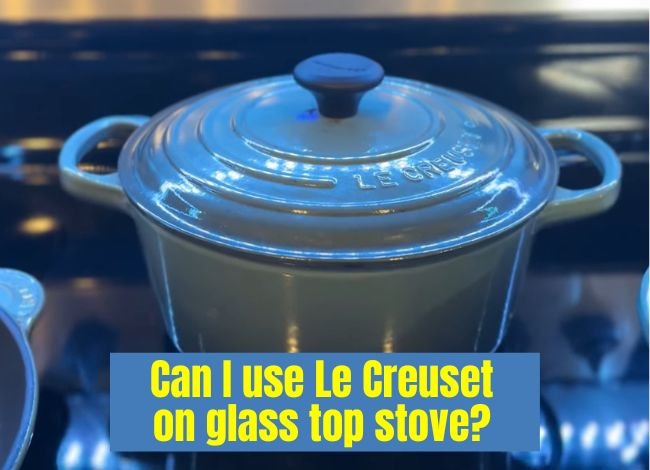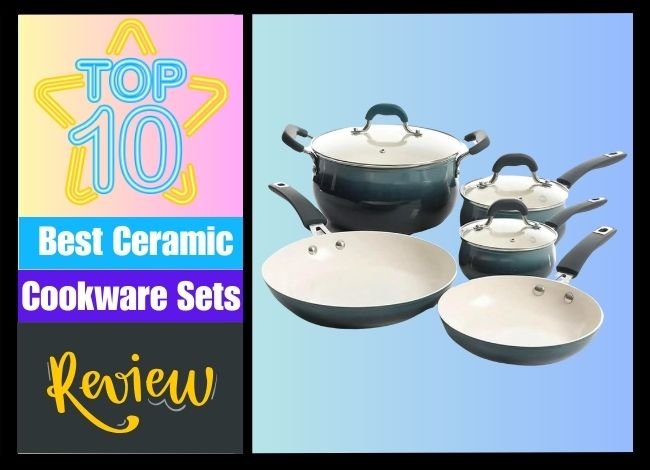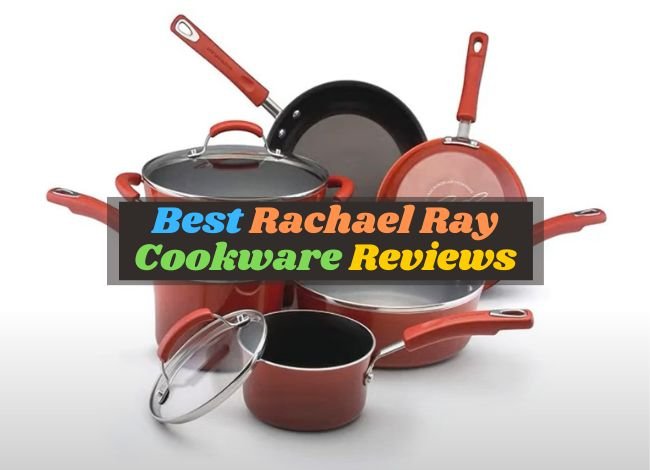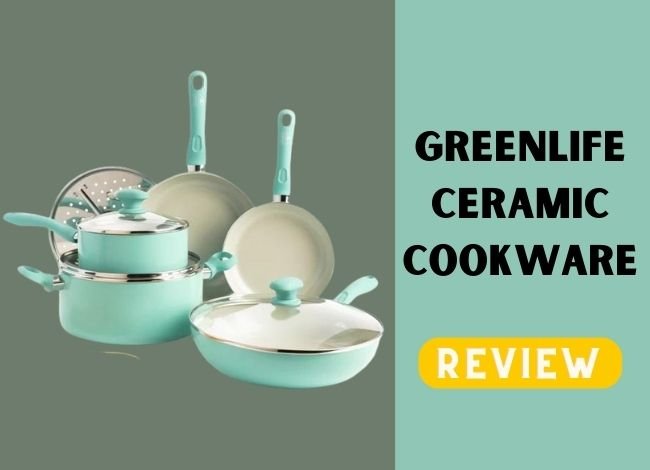Last Updated on January 30, 2024
Navigating the world of cookware can be challenging, especially when it comes to selecting the right types for glass top stoves. This guide aims to provide clarity and insights on various cookware options including cast iron, porcelain, Pyrex, and Dutch ovens, and addresses common concerns about the durability of glass-top stoves.
Can Enamelled Cast Iron Pans Be Used on a Glass Cooktop?
Enamelled cast iron pans, known for their durability and heat retention, are often a top choice for many home chefs. But when it comes to using them on glass cooktops, caution is advised. While these pans are generally safe for use on glass surfaces, their heavy weight and rough exterior can risk scratching or damaging the cooktop. It’s important to lift these pans instead of sliding them across the stove and to keep the surface clean to prevent scratches. Additionally, ensuring a gradual temperature change can prevent potential damage to both the pan and the cooktop.
Related Post: Are Le Creuset handles oven proof?
Is It Possible to Use Le Creuset on an Electric Stovetop?
Le Creuset cookware, renowned for its quality and versatility, is often discussed for its compatibility with different stovetops, including electric ones. The good news is that Le Creuset can be safely used on electric stovetops, including glass and coil varieties. The key to preventing damage is understanding the cookware’s heat conductivity and adjusting the heating process accordingly. It’s advisable to start at a lower temperature and gradually increase it, as Le Creuset’s cast iron construction allows it to retain heat efficiently. This approach helps prevent thermal shock to the cookware and the glass cooktop.
Can Dutch Ovens Be Used on Glass Stove Tops?
Dutch ovens are another popular cookware choice, known for their versatility in preparing a variety of dishes. When it comes to using them on glass stove tops, the same principles that apply to enamelled cast iron pans hold true. It’s important to be cautious of the weight and the potential for scratching the glass surface. Additionally, avoiding sudden temperature changes and not sliding the Dutch oven across the cooktop can help preserve the integrity of both the cookware and the stove. With careful handling, Dutch ovens can be a valuable addition to your glass top stove cooking routine.
Related Post: Can Le Creuset stoneware go in the microwave?
What Are the Best Pots and Pans to Use on a Glass Top Stove?
Selecting the right pots and pans for a glass top stove is crucial for both cooking performance and the longevity of the stove. Ideal cookware should have a smooth, flat bottom to provide the best contact with the stove and even heat distribution. Lightweight and medium-weight pans are preferable to avoid any potential damage due to heaviness. Materials like stainless steel, titanium, aluminum, and copper-bottomed pans are great choices. Non-stick surfaces can also be beneficial but require careful temperature management to maintain their coating. Regular maintenance and gentle handling will ensure both your cookware and glass top stove remain in pristine condition.
Was there anything you shouldn’t use on a glass-topped stove?
Regarding glass-topped stoves, certain cookware is less than ideal and can even cause damage. Heavy cast iron pots and pans, like Le Creuset’s, need careful handling due to their weight and rough bases. Glass cookware, stoneware, and any pots or pans with rough edges should also be avoided as they can scratch the stove’s surface. Additionally, cookware made of materials that can melt at high temperatures, like plastic or aluminum foil, should never be used. It’s not just about the material but also the condition of the cookware. Warped or uneven bottoms can create hot spots, leading to inefficient cooking and potential hazards. Ensuring your cookware is clean and smooth-bottomed is key to maintaining the integrity of your glass-top stove. Remember, the right cookware can enhance your cooking experience while protecting your appliance.
Related Post: What does Le Creuset seconds mean?
Follow these steps to prevent cast iron from scratching on a glass-top stove
Using a Le Creuset or other cast iron cookware on a glass-top stove can be risky due to the potential for scratching. Always lift and place the cookware gently instead of sliding it across the surface to mitigate this. Keeping the bottom of the pan smooth and free of rough spots is crucial; consider using a heat diffuser to distribute the weight and heat evenly. Regular cast iron maintenance, such as proper seasoning, can also prevent rough spots from developing. Another useful tip is to keep the stove and the cookware clean, as debris trapped between them can cause scratches. Silicone mats or cooktop protectors are a great investment; they act as a protective layer between the stove and your cookware. Though these steps require a bit of extra effort and care, they can help you enjoy the benefits of cast iron cooking without damaging your glass-top stove.
What is the best way to remove scratches from my glass top stove?
If your glass-top stove has already suffered scratches, there are ways to minimize or remove them. Begin with a thorough cleaning using a glass cooktop cleaner; this removes debris that could make the scratches seem worse. A mild abrasive like baking soda mixed with water can be effective for light scratches. Apply the paste gently with a soft cloth in a circular motion. For deeper scratches, products specifically designed for glass stove tops are available. Be cautious with DIY methods involving harsher abrasives, as they can cause more harm than good. If the scratch is deep, it may not be removable, and continuing to use the stove could risk further damage or cracking. In such cases, it might be wise to consult a professional for repair or consider replacing the glass top. Regular maintenance and careful use of appropriate cookware can prevent future scratches.
What is the best way to protect a glass stovetop?
A combination of preventive measures and regular maintenance is key to keeping your glass stovetop in pristine condition. Always use the correct cookware – heavy, flat-bottomed pans are ideal. Avoid using cookware with rough or damaged bottoms as they can scratch the glass surface. Never drag pots and pans across the cooktop; lift them instead. Keep the stovetop clean; spills and overflows should be wiped up promptly to prevent them from baking on the surface. A daily wipe-down with a suitable cleaner can keep it looking new. Using protective products like stovetop protectors or mats when the stove is not in use can also help safeguard the surface. Remember, the longevity of your glass stovetop largely depends on how well you maintain and protect it.
What is the difference between glass and ceramic models when it comes to cooktops?
While often used interchangeably, there are notable differences between glass and ceramic cooktops. Glass cooktops are actually made from a blend of ceramic and glass and are known for their smooth, sleek surface. They heat up quickly and provide an even cooking surface. On the other hand, ceramic cooktops are made entirely of ceramic glass but have different heating elements underneath. They are slightly more durable and resistant to high temperatures compared to the glass-ceramic blend. Both types require careful use and maintenance to prevent scratches and damage. Regarding cleaning, both surfaces benefit from specific cleaners designed for their material. In terms of cookware, both types of cooktops work best with flat-bottomed, non-abrasive pots and pans. Choosing between the two often comes down to personal preference in terms of aesthetics, cost, and the specific features offered by the manufacturer.
Which is Better for Grilling: Cast Iron or Porcelain?
When it comes to grilling, especially on a glass top stove, the choice between cast iron and porcelain cookware is crucial. Cast iron is renowned for its superior heat retention and even cooking, making it ideal for achieving that perfect sear on meats and vegetables. Its durability and ability to withstand high temperatures make it a popular choice among culinary enthusiasts. On the other hand, porcelain cookware, often porcelain-enameled, combines the heat efficiency of metal with a non-reactive, easy-to-clean surface. While it’s less prone to rusting or corroding compared to cast iron, it may not distribute heat as evenly. In terms of grilling, cast iron generally takes the lead for its heat retention and even cooking capabilities, but porcelain offers ease of maintenance and aesthetic appeal. Ultimately, your choice depends on your cooking style and priorities regarding maintenance and aesthetic preferences.
Specifically Designed Pans for Glass-Top Stoves Are Required
There is a common misconception that glass-top stoves require specially designed pans. In reality, the key factor is not the specific design but rather the material and construction of the cookware. Glass top stoves function best with flat-bottomed pans that maximize contact with the surface, ensuring even heat distribution. Materials like heavy-gauge aluminum, titanium, stainless steel, and copper-bottomed pans are excellent choices as they conduct heat efficiently and maintain a consistent cooking temperature. Avoid cookware with rough or warped bottoms as they can scratch the glass surface. While specifically designed pans are not mandatory, using suitable cookware that complements the technology of glass top stoves can significantly enhance your cooking experience.
Is It Okay to Use Pyrex on the Stovetop?
Using Pyrex on a stovetop, particularly a glass top stove, requires caution. Pyrex, known for its heat-resistant properties in the oven, may not be suitable for direct exposure to stovetop heat. This is because Pyrex is designed to withstand oven heat, which surrounds the cookware evenly, as opposed to the direct, concentrated heat of a stove burner. This can lead to thermal shock, causing the Pyrex to crack or shatter. Referring to the manufacturer’s guidelines before using Pyrex on any stovetop is important. Alternatives such as stovetop-safe glass cookware or metal pans are recommended for cooking on glass top stoves.
Do Glass-Topped Stoves Have a High Failure Rate?
The durability and longevity of glass-topped stoves are often questioned. Contrary to popular belief, glass top stoves are quite durable and designed to withstand regular kitchen activities. However, they do require careful handling compared to their coil or gas counterparts. The glass surface can be prone to scratches or cracks if improperly maintained. Using the right cookware and avoiding dragging pots and pans across the surface can greatly reduce the risk of damage. In terms of internal components, glass-top stoves are similar to other stoves, and with proper maintenance, they do not inherently have a higher failure rate. Regular cleaning and careful use can ensure the longevity of your glass top stove.
Related Post: What do numbers mean on Le Creuset?
What is it About Dutch Ovens That Makes Them So Expensive?
Dutch ovens are prized for their versatility, durability, and superior cooking qualities, contributing to their higher price point. These heavy-duty pots are typically made from cast iron, known for its excellent heat retention and distribution properties. The manufacturing process of casting iron and the subsequent enamel coating, often done by hand, adds to the cost. Additionally, the durability and longevity of Dutch ovens mean they can last for decades, even generations, making them a valuable investment for many home cooks. Their ability to go from stovetop to oven and their suitability for a wide range of cooking methods, from braising to baking, make them an essential and versatile tool in the kitchen.
Is it possible for cast iron to scratch an induction cooktop?
Using cast iron cookware, like Le Creuset, on an induction cooktop can be a topic of concern for many. The bottom of cast iron pots and pans is often rough and can potentially scratch the smooth surface of an induction cooktop. The weight of cast iron cookware also contributes to the risk. However, with proper use and care, these risks can be minimized. It’s advisable to lift and not slide the cookware on the cooktop. Using a protective mat or a parchment paper between the cookware and the cooktop can also be a practical solution. Regular maintenance and gentle handling of both the cookware and the cooktop can prolong their life and appearance. Moreover, newer models of cast iron cookware often have smoother bottoms, making them more suitable for use on sensitive surfaces like glass or induction cooktops.
What causes glass-top stoves to crack?
Glass-top stoves are popular for their sleek appearance and easy-to-clean surfaces, but they can be prone to cracking. Cracks can occur due to a variety of reasons. The most common cause is thermal shock, which happens when a hot surface is cooled down too quickly. This can occur if cold food or liquid is spilled on the hot cooktop. Another cause of cracking is physical impact. Heavy objects dropped on the cooktop or using pots and pans that are too heavy can result in cracks. Incorrect cookware can also contribute; uneven or warped bottoms can put uneven pressure on the glass, leading to stress cracks. To prevent cracking, it’s important to avoid sudden temperature changes, use cookware of appropriate weight, and handle pots and pans gently. Regular cleaning and inspection for minor damages can also help in the early detection and prevention of larger cracks.
What is the best way to maintain my induction cooktop from scratching?
Maintaining an induction cooktop to prevent scratches involves careful handling and regular cleaning. Firstly, using the right cookware is essential. Cookware with smooth, flat bottoms is ideal as it reduces the risk of scratching when moved across the cooktop. Avoid sliding pots and pans; instead, lift them when moving. Use soft, clean cloths or sponges for cleaning to avoid abrasive materials scratching the surface. Spills should be cleaned immediately to prevent them from burning onto the surface, as scraping off burnt residues can cause scratches. Regular cleaning with a cooktop cleaner specifically designed for induction surfaces can help maintain its appearance and functionality. Additionally, avoiding placing sharp or rough objects on the cooktop, like metal utensils or scouring pads, will help keep the surface scratch-free.
What is the best way to clean my glass cooktop?
Cleaning a glass cooktop requires the right technique to ensure it remains scratch-free and shiny. Use a soft cloth or sponge with a gentle cleaner specifically designed for glass cooktops for daily cleaning. Avoid abrasive cleaners or scrubbers that can scratch the surface. For stubborn stains or burnt-on food, a cooktop scraper designed for glass surfaces can be used carefully to remove the residue. After scraping, clean the surface with a cooktop cleaner and a soft cloth. It’s also beneficial to clean spills and splatters immediately after the cooktop cools down to prevent them from burning on. After cleaning, polish the cooktop with a microfiber cloth for a streak-free finish. Regular cleaning not only maintains the appearance of your cooktop but also ensures optimal performance.
Conclusion
In conclusion, using Le Creuset or other cast iron cookware on a glass top stove is possible with proper care to prevent scratching and damage. Understanding the causes of damage like cracks in glass-top stoves, and adopting preventive measures, is key to maintaining their pristine condition. Regular, gentle cleaning with appropriate products will keep your induction or glass cooktop looking new and functioning efficiently for years to come. Remember, the longevity and appearance of your cooktop largely depend on how well you maintain it.




